In many applications, one needs to compress the divergence of an incident laser beam. This is commonly referred to as laser beam collimation.
An inverted telescopes is often used to collimate an incident laser beam. The advantages of using an inverted telescope include excellent collimation performance, and the collimation performance being insensitive to the position of the telescope with respect to the laser beam's waist position. However, the disadvantage of an inverted telescope is that the system is big.
By contrast, using a single lens for collimation is opposite. It is small and compact, but the collimation performance is sensitive to the position of the telescope with respect to the laser beam's waist position. The incident beam beam waist should be located at the focal plane of the lens, otherwise the collimation performance is poor.
Using diffractive optical element can solve these two problems at the same time, i.e. the device is small and compat, while the collimating performance is tolerant to the position of the DOE with respect to the beam waist. Recently Wuxi OptonTech Ltd has developed this kind of DOE-based collimation device. We have achieved excellent collimation performance when the distance between the dOE and beam waist from 0up to 2000 mm, while the collimation distance can be as long as 40 km.
Without losing generality, we choose a lens with focal length of 200 mm. The following picture shows 1-D and 2-D intensity distribution at the collimation distance of 40 km when the distance d between the beam waist and the DOE is 100mm, 200mm, 300mm, 400mm and 500mm. It can be seen that the collimation performance is good only when the distance d is equal to the focal length f, otherwise the collimation performance is poor.

By contrast, the DOE developed by Wuxi OptonTech Ltd can achieve excellent collimation performance when d varied from 0 to 2000 mm. The following picture shows the situation of our DOE, i.e. 1-D and 2-D intensity distribution at the collimation distance of 40 km when the distance d between the beam waist and the DOE is 100mm, 200mm, 300mm, 400mm and 500mm. It can be seen that the collimation performance is good when the distance d varied from 100mm to 500mm. The collimation performance is particularly excellent when d is 100, 200 and 400 mm.
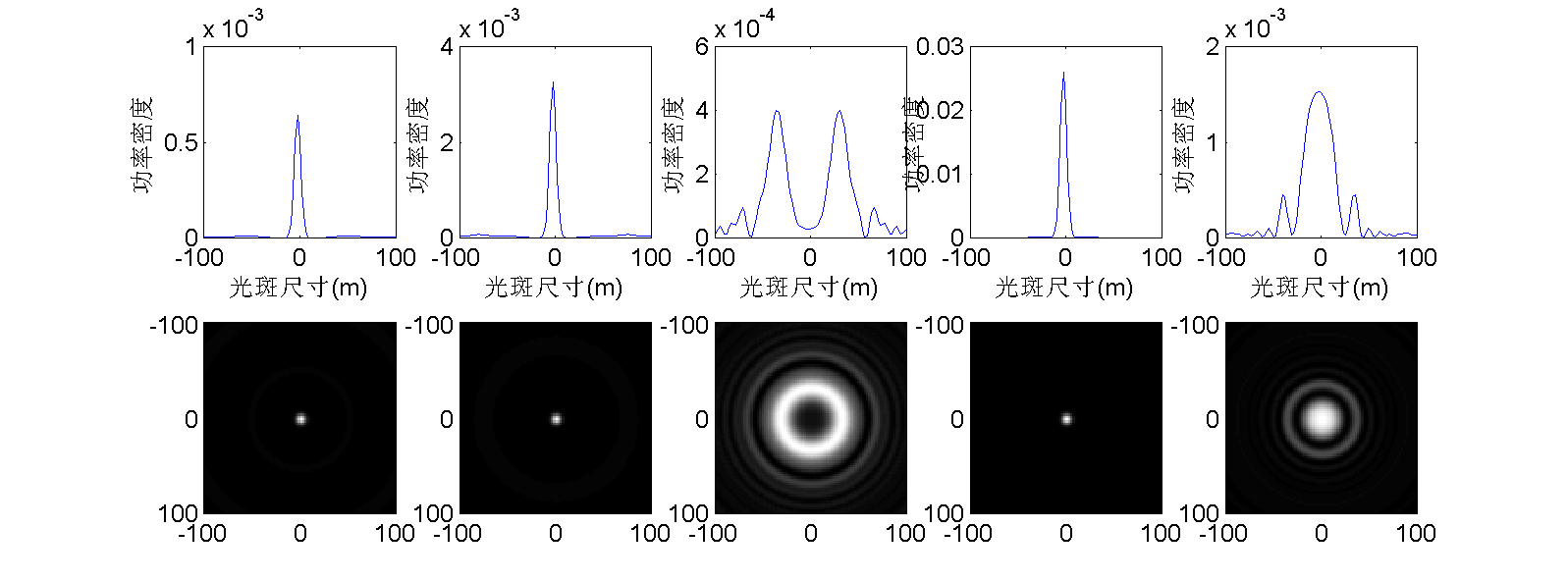
===========================================================
The following picture shows the situation of using our
DOE, i.e. the 1-D and 2-D intensity distributions
at the collimation distance of 10 km, 25 km and 40 km when the DOE is located at
100 mm away from the incident beam waist. It can be seen the beam size at these
distances is all small.
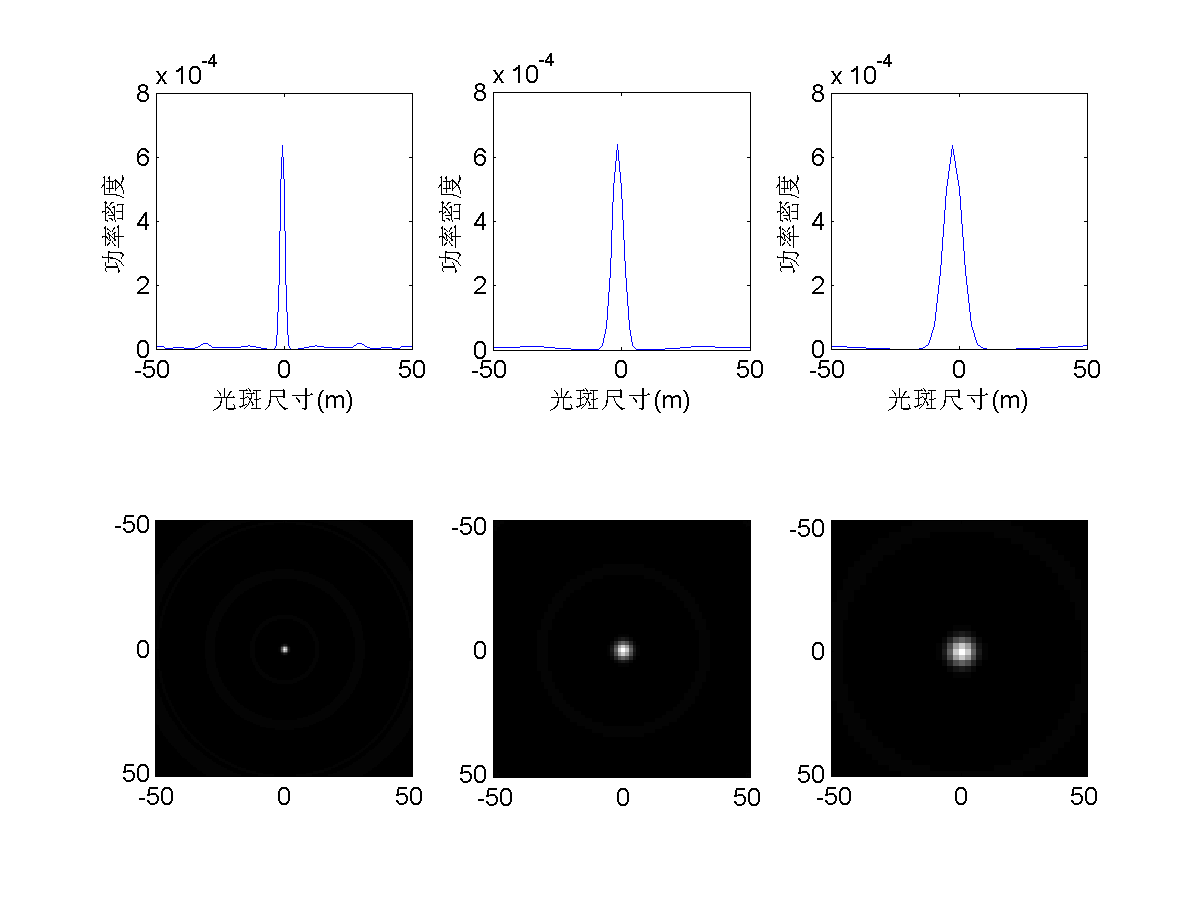
The following picture shows the situation of using a lens with focal length of 200 mm, i.e. 1-D and 2-D intensity distribution at the collimation distance of 10 km, 25 km and 40 km when the lens is located at 100 mm away from the incident beam waist. It can be seen the beam size is quite large and collimation performance is not good at all.
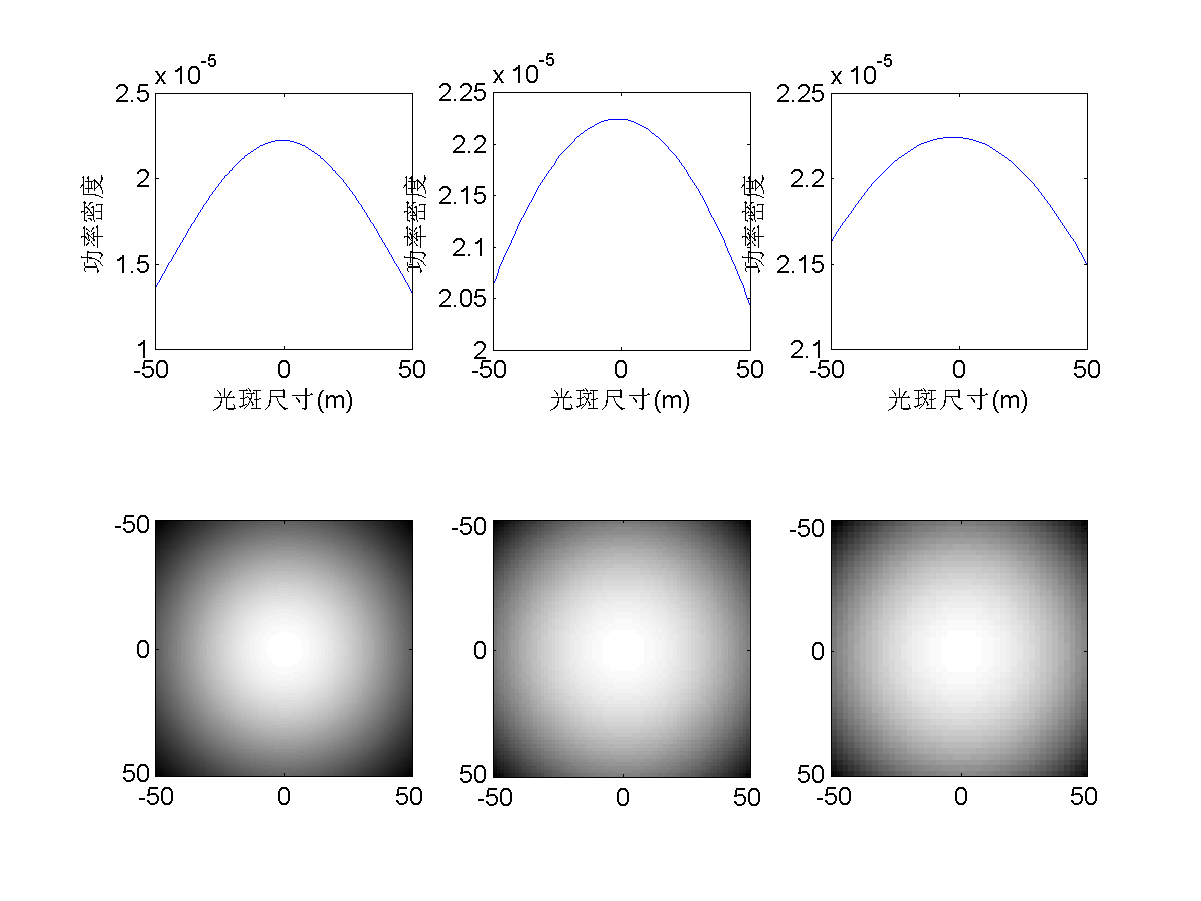
===========================================================
The following
picture shows the situation of using our DOE, i.e. the 1-D and 2-D intensity
distributions at the collimation distance of 10 km, 25 km and 40 km when the DOE
is located at 200 mm away from the incident beam
waist. Again, it can be seen the beam size at these distances is all small, and
the collimation performance is excellent.
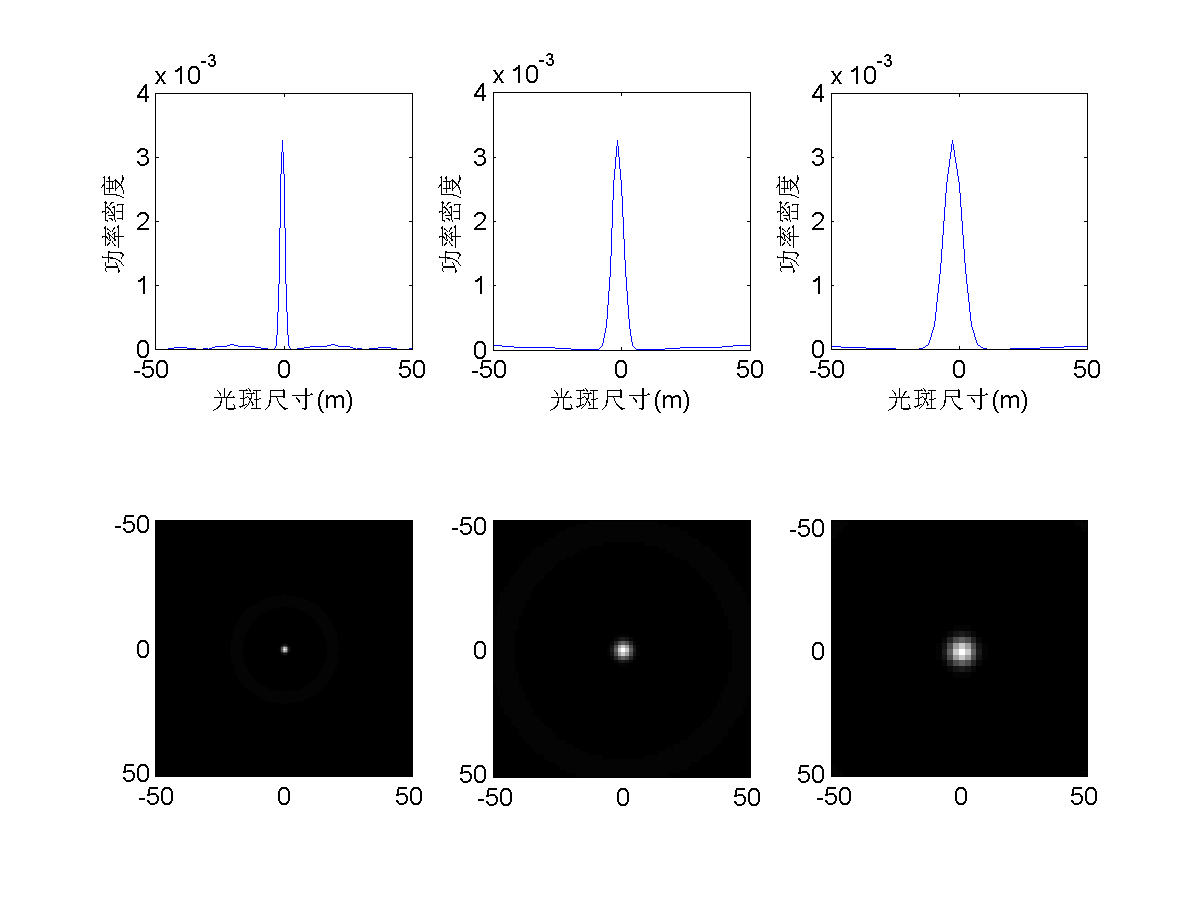
The following
picture shows the situation of using a lens with focal length of 200 mm, i.e.
1-D and 2-D intensity distribution at the collimation distance of 10 km, 25 km
and 40 km when the lens is located at 200 mm away
from the incident beam waist. It can be seen the beam size is small and
collimation performance is excellent. Unfortunately, the excellent performance
occurs only at this distance and will loss at all other distances.
===========================================================
The following picture shows the situation of using our DOE, i.e. the 1-D and 2-D intensity distributions at the collimation distance of 10 km, 25 km and 40 km when the DOE is located at 300 mm away from the incident beam waist.
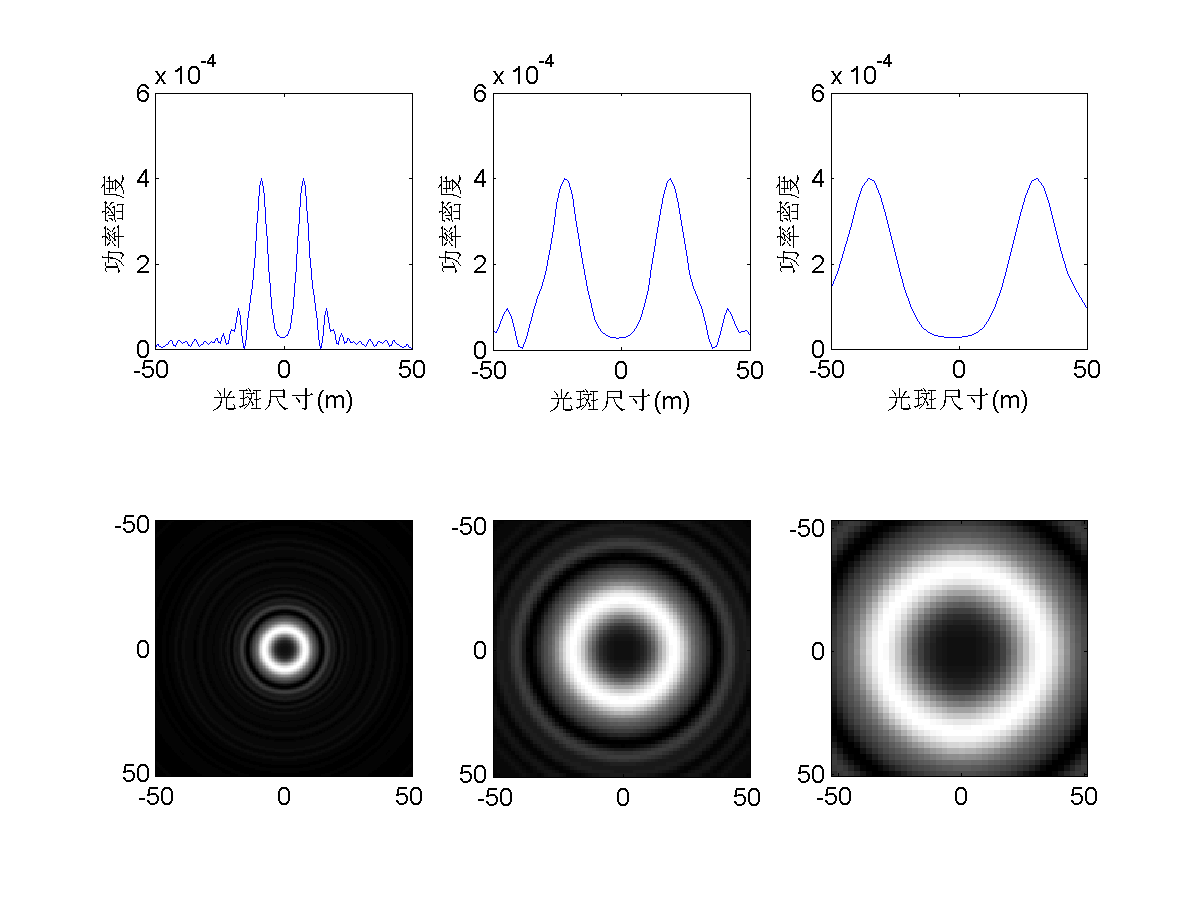
The following
picture shows the situation of using a lens with focal length of 200 mm, i.e.
1-D and 2-D intensity distribution at the collimation distance of 10 km, 25 km
and 40 km when the lens is located at 300 mm away
from the incident beam waist.
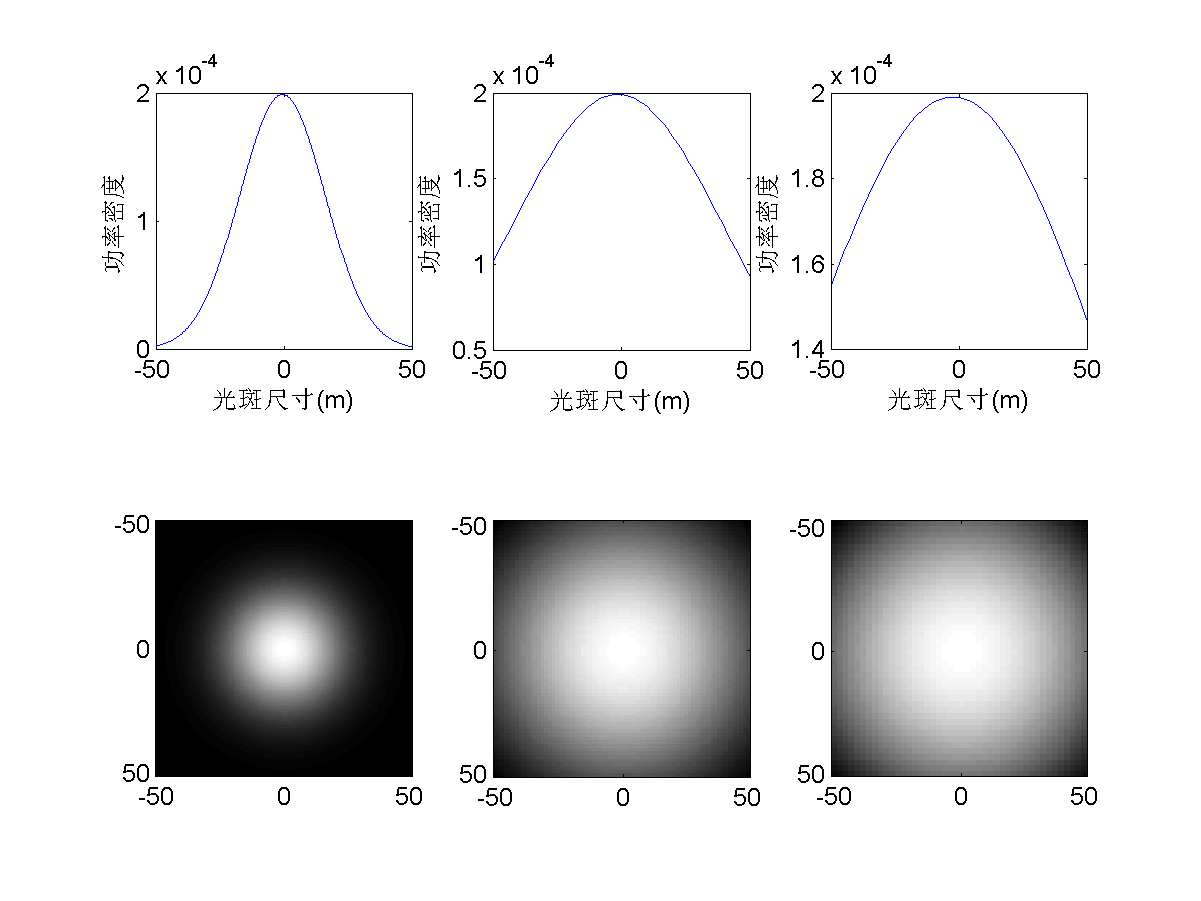
===========================================================
The following picture shows the situation of using our
DOE, i.e. the 1-D and 2-D intensity distributions at the collimation distance of
10 km, 25 km and 40 km when the DOE is located at 400 mm
away from the incident beam waist. Again, it can be seen the beam size at these
distances is all small, and the collimation performance is excellent.
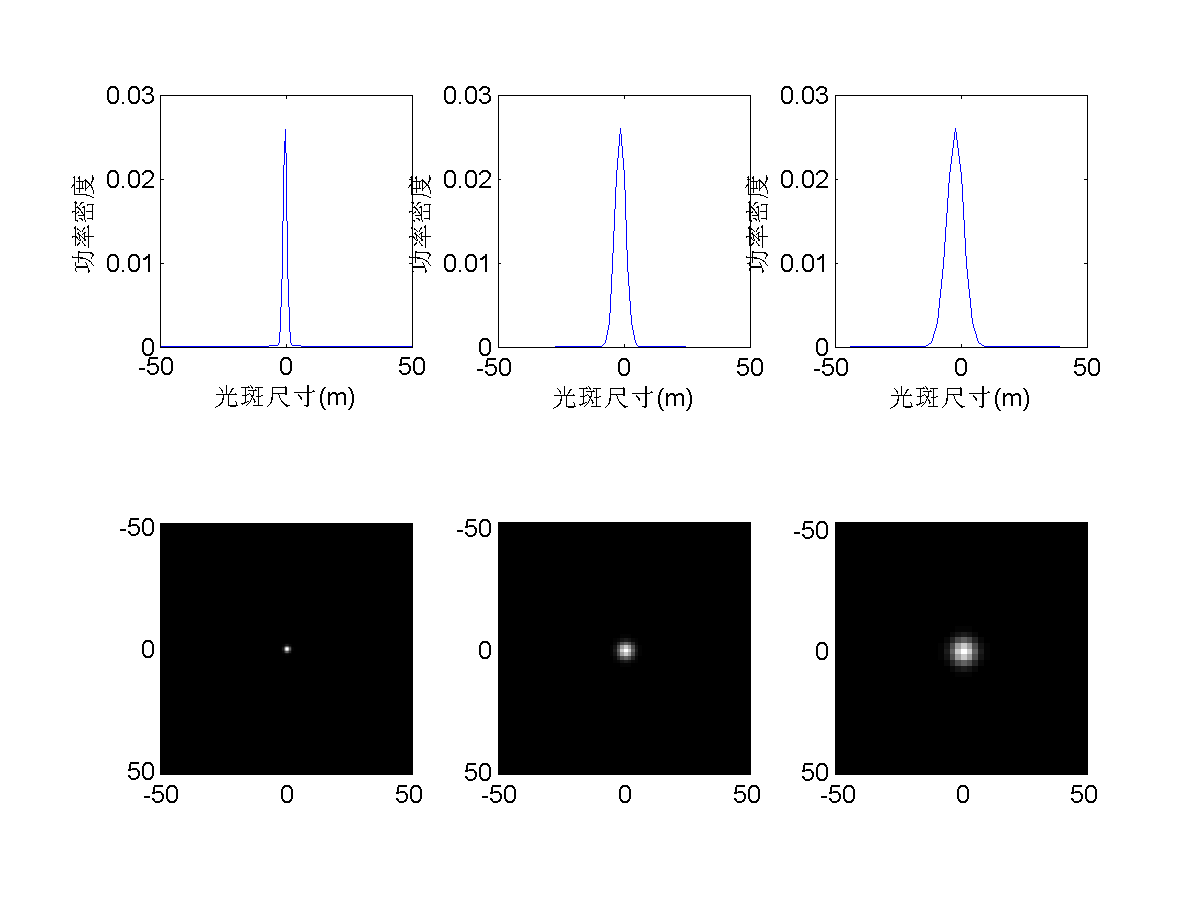
The following
picture shows the situation of using a lens with focal length of 200 mm, i.e.
1-D and 2-D intensity distribution at the collimation distance of 10 km, 25 km
and 40 km when the lens is located at 400 mm away
from the incident beam waist. It can be seen the collimation performance is not
satisfactory at all.
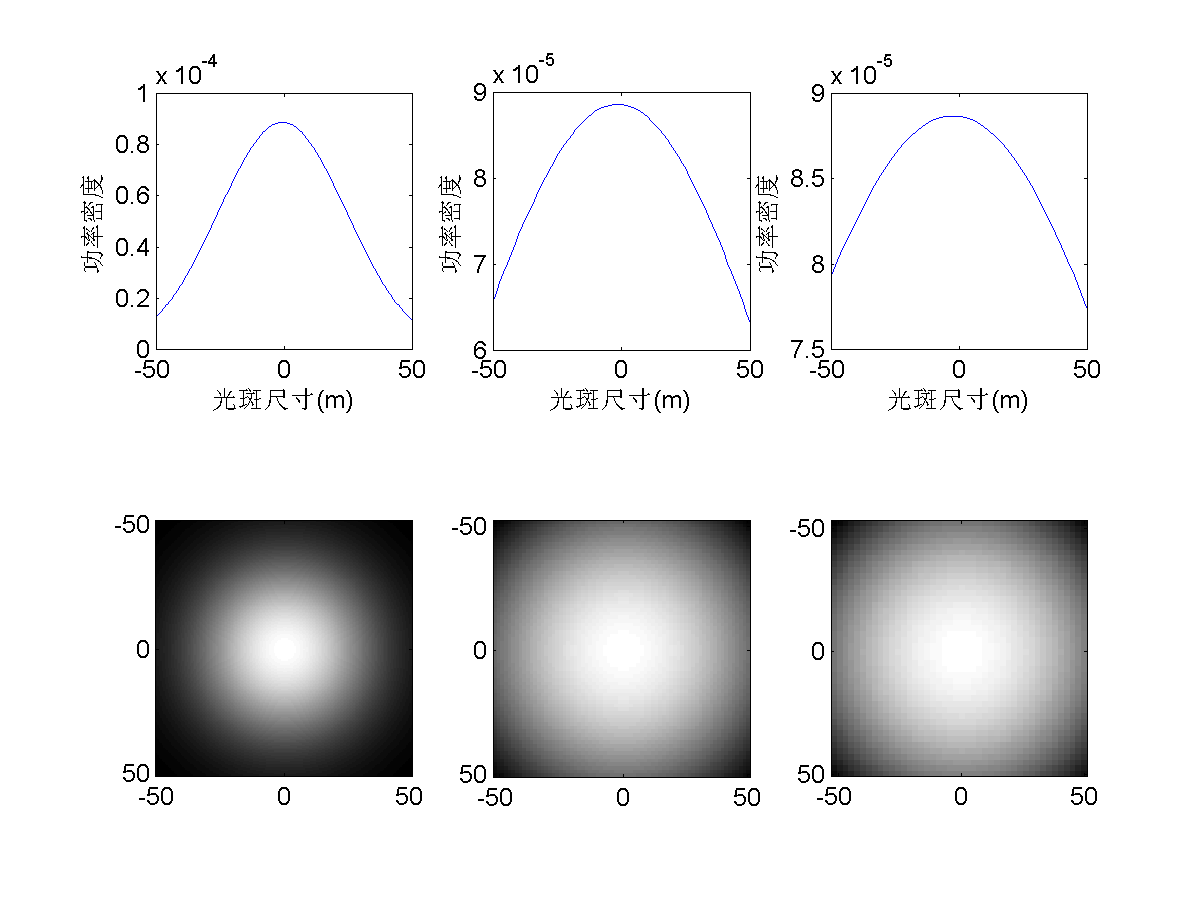
===========================================================
The following picture shows the situation of using our DOE, i.e. the 1-D and 2-D intensity distributions at the collimation distance of 10 km, 25 km and 40 km when the DOE is located at 500 mm away from the incident beam waist.
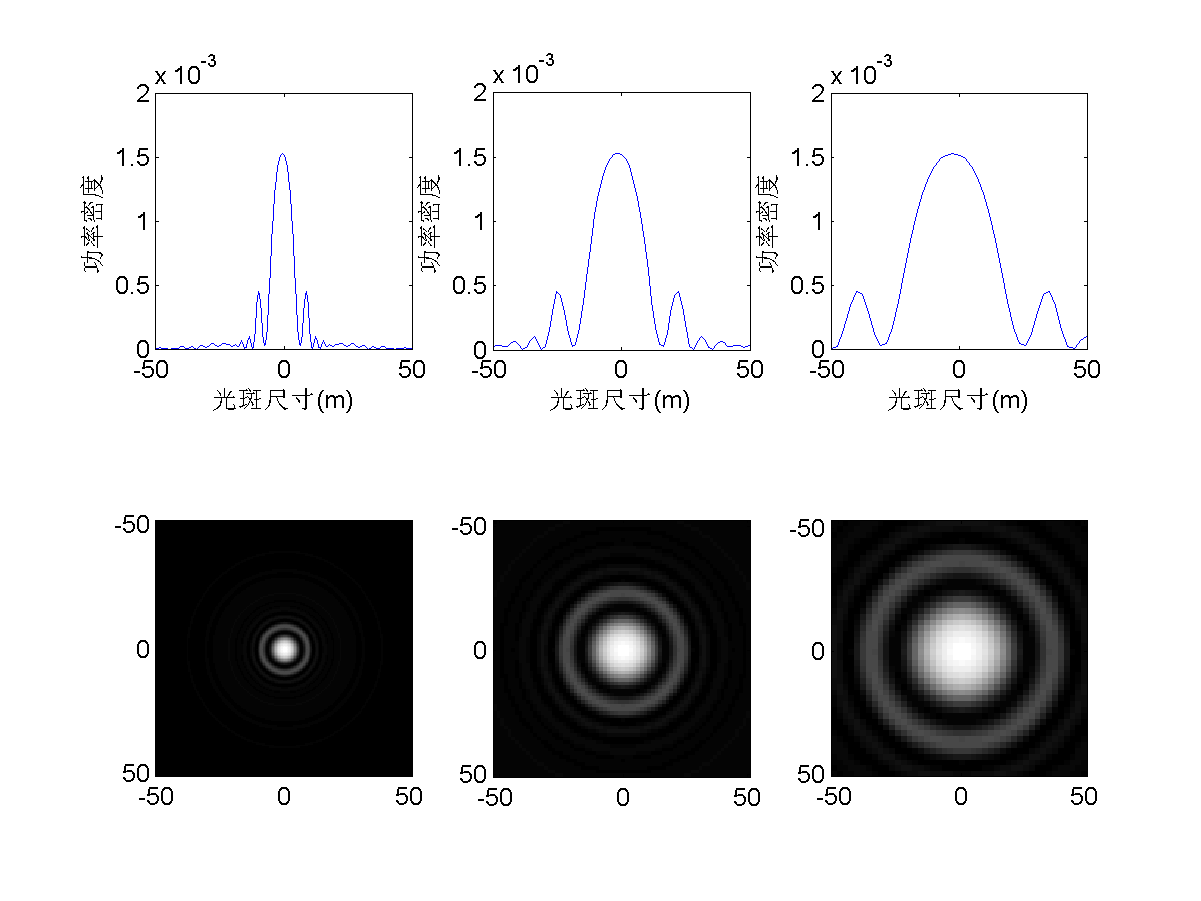
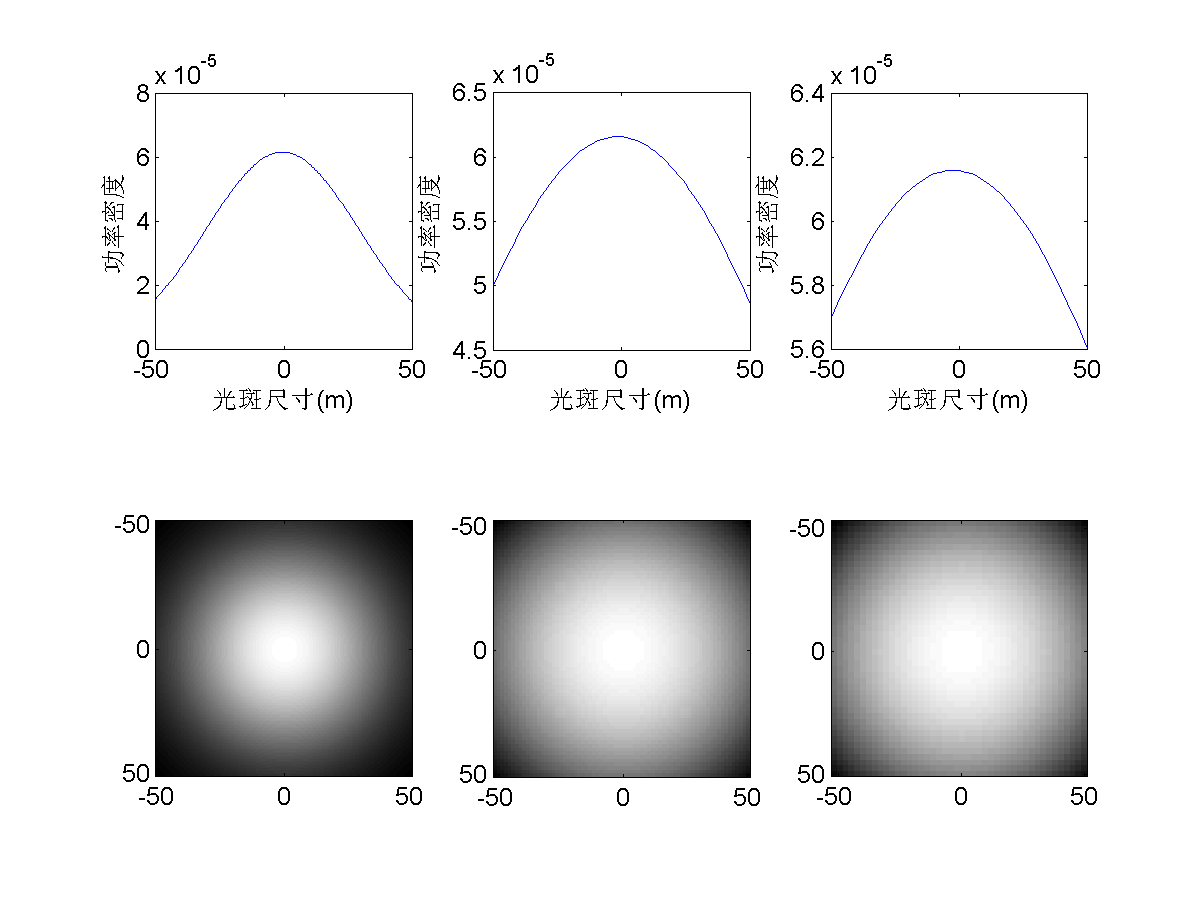
From the picture shown above, we can see that using our DOE-based collimator, good collimation performance can be achieved when the DOE is located from 0 to 500 mm away from the incident beam waist. The collimation performance is particularly excellent when the distance is 100 mm, 200 mm and 400 mm.
